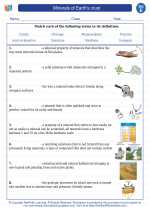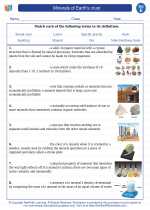What are Minerals?
Minerals are solid substances formed through geological processes. They are naturally occurring and are not made by living organisms. Each mineral has a specific chemical composition and a unique internal structure, which gives it its distinct physical properties.
Types of Minerals
There are over 4,000 known minerals, but they can be classified into groups based on their chemical composition. The main mineral groups are silicates, carbonates, oxides, sulfates, sulfides, and native elements.
Importance of Minerals
Minerals are essential for various human activities and industries. They are used in construction, manufacturing, jewelry, and technology. Additionally, many minerals are important for the human body and are necessary for maintaining good health.
Formation of Minerals
Minerals are formed through a variety of geological processes. These processes include crystallization from magma, precipitation from water, and metamorphism. The conditions under which minerals form, such as temperature, pressure, and chemical environment, determine their physical and chemical properties.
Identifying Minerals
Geologists use various physical and chemical properties to identify minerals. These properties include color, luster, hardness, cleavage, and streak. Additionally, minerals can be identified through their reaction to acids, magnetism, and fluorescence under ultraviolet light.
Study Guide
.◂Science Worksheets and Study Guides Fifth Grade. Minerals of Earth's crust

 Worksheet/Answer key
Worksheet/Answer key
 Worksheet/Answer key
Worksheet/Answer key
 Worksheet/Answer key
Worksheet/Answer key
 Vocabulary/Answer key
Vocabulary/Answer key
 Vocabulary/Answer key
Vocabulary/Answer key
